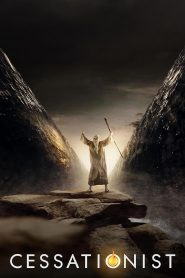
Video Sources 22 Views Report Error

Synopsis
This narrative explores the rise and fall of a once-thriving company, charting its journey from its ambitious founding to its catastrophic implosion at the hands of outside investors. The story begins with the company’s visionary founder, who, driven by innovation and a passion for creating something truly impactful, builds a business that quickly gains traction in its industry. With a unique product or service, the company attracts a loyal customer base and begins to expand rapidly. The early days are marked by hard work, creativity, and a close-knit team that shares a common goal of achieving success.
However, as the company grows, it catches the attention of outside investors. Initially, these investors seem like a dream come true, offering the financial backing needed to take the business to the next level. The founder, eager to capitalize on the company’s momentum, agrees to bring them on board. These investors promise to inject capital, streamline operations, and help the company scale to new heights. The future looks bright, and the founder feels confident that this partnership will lead to even greater success.
But as the investors gain more control, the dynamics within the company begin to shift. The new management style is drastically different from the founder’s original vision. The investors, focused solely on short-term profits, start making decisions that prioritize immediate returns over long-term sustainability. They cut costs aggressively, lay off key employees, and push the company into risky ventures without fully understanding the market or the company’s core strengths. The once-thriving company begins to lose its way, and the culture that made it successful starts to erode.
The founder, now sidelined by the investors, watches helplessly as the company veers off course. The investors’ focus on quick gains leads to a series of poor decisions that put the company in a precarious financial position. As the company’s debt mounts and revenues decline, it becomes clear that the investors have overextended themselves and the business. The company’s reputation suffers, and once-loyal customers start to lose faith.
The situation reaches a breaking point when the investors, desperate to recoup their losses, resort to unethical practices. They manipulate financial statements, engage in shady deals, and take on even more debt to keep the company afloat. These actions eventually draw the attention of regulators, who launch an investigation into the company’s practices. The company’s stock plummets, and creditors begin to circle, sensing the impending collapse.
As the investigation unfolds, the full extent of the investors’ mismanagement and deceit comes to light. The company, once a beacon of innovation and success, is now bankrupt and embroiled in scandal. The founder, who had built the company from the ground up, is left to pick up the pieces. The dream of creating something lasting has been shattered, and the company’s legacy is tarnished.
In the end, the story serves as a cautionary tale about the dangers of losing sight of a company’s original vision and values in the pursuit of profit. It highlights the risks of bringing in outside investors who may not share the same commitment to the company’s long-term success. The collapse of the business is a stark reminder that short-term gains often come at the expense of long-term stability, and that the true cost of success can be measured not in dollars, but in the lasting impact on the people and the community that the company was meant to serve.
Original title MoviePass, MovieCrash
IMDb Rating 6.7 1,529 votes
TMDb Rating 7 15 votes
Director
Director

















